Education
10 Famous Punjabi Writers With A Great Impact On The Literary World

Punjab, a region known for its rich cultural heritage, vibrant traditions, and warm-hearted people, has also made significant contributions to the world of literature. Punjabi literature, with its deep-rooted history, has produced numerous talented writers whose works continue to inspire and captivate readers across the globe. In this article, we will explore the lives and literary contributions of ten famous Punjabi writers, showcasing their talent and the impact they have had on the literary landscape.
1. Amrita Pritam (1919-2005)
Amrita Pritam, a prominent figure in Punjabi literature. She is celebrated for her poignant poetry and captivating prose. She was a renowned Punjabi writer, poet, and essayist, celebrated for her profound literary contributions and feminist perspectives.
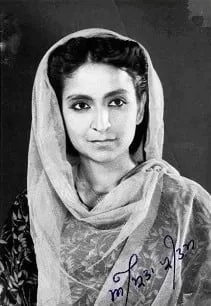
Image by garystockbridge
Born in Gujranwala, British India (now in Pakistan), Pritam’s literary journey began at an early age, and she gained prominence for her poignant poetry and insightful prose. Her works often explored themes of love, loss, and the human condition, resonating deeply with readers across cultures.
Pritam’s magnum opus, the Punjabi poem collection “Kagaz Te Canvas,” showcased her poetic brilliance. She was also known for her novel “Pinjar,” addressing the partition of India and its impact on society.
Pritam’s writing was marked by emotional depth and a keen understanding of human relationships. Throughout her life, she received numerous accolades, including the Sahitya Akademi Award and the Jnanpith Award, the highest literary honor in India.
Amrita Pritam’s legacy endures through her literary masterpieces, inspiring generations and fostering a deeper understanding of the human soul through the power of words.
2. Shiv Kumar Batalvi (1936-1973)
Shiv Kumar Batalvi (1936-1973) was a celebrated Punjabi writer, poet, and playwright known for his profound impact on Punjabi literature. Born in British India, his literary works primarily explored themes of love, heartbreak, and existentialism. Batalvi’s poetry was characterized by its raw emotional intensity and deep introspection.
He gained widespread recognition with his poignant collection of poems titled “Luna,” which delved into the complexities of human relationships and the human psyche. His unique style and ability to evoke deep emotions endeared him to readers and critics alike.
Despite his relatively short life, Batalvi’s contribution to Punjabi literature remains unparalleled. His words continue to resonate with readers, capturing the essence of human emotions and experiences. Batalvi’s legacy lives on through his timeless poetry, which has inspired generations and solidified his position as one of the most influential figures in Punjabi literature.
3. Pash (1950-1988)
Pash, whose real name was Avtar Singh Sandhu, was a renowned Punjabi writer, poet, and activist born in 1950 and tragically assassinated in 1988.
He is celebrated for his profound contributions to Punjabi literature, particularly for his thought-provoking poetry that challenged societal norms and political injustices.
Pash’s works reflected the turbulent times he lived in, addressing issues like social inequality, oppression, and the struggle for justice. His poetry was characterized by its powerful imagery, stark realism, and a deep commitment to the welfare of the common people.
He played a crucial role in the Naxalite movement in Punjab and was a staunch advocate for the rights of the marginalized. His life was cut short by violence when he was just 38, but his literary legacy endures. Pash’s verses continue to inspire generations, serving as a reminder of the power of words to bring about change and shed light on the darkest corners of society.
4. Surjit Patar (b. 1944)
Surjit Patar, born in 1944, is one of the renowned and famous Punjabi writers celebrated for his remarkable contributions to Punjabi literature. With a prolific career spanning several decades, Patar has earned recognition for his profound poetry and insightful prose.
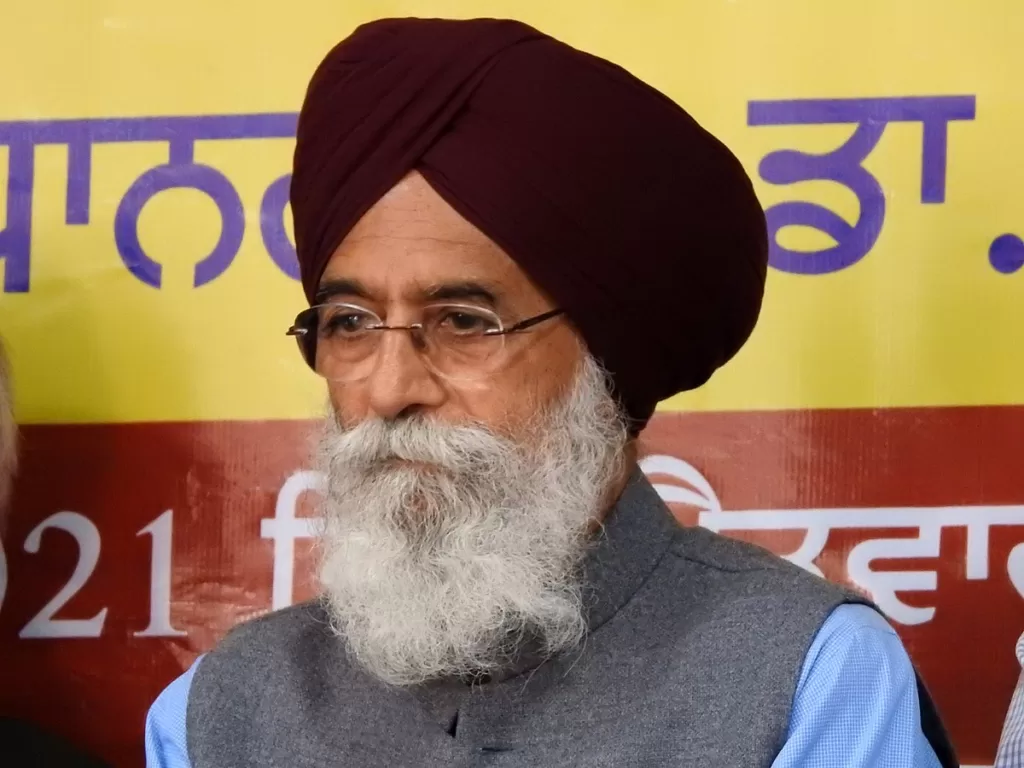
Image by Harvinder Chandigarh
His works delve into diverse themes, exploring the complexities of human emotions, social issues, and cultural nuances. Patar’s writing is characterized by its lyrical quality, capturing the essence of Punjab’s rich heritage and the resilience of its people.
He has skillfully bridged traditional Punjabi poetic forms with contemporary sensibilities, making his work accessible and relevant to readers of all ages. His poetry reflects a deep understanding of the human condition, often infused with wit, satire, and poignant imagery.
Apart from his literary endeavors, Patar is also known for his active involvement in promoting the Punjabi language and culture. His influence extends beyond the literary realm, inspiring readers and aspiring writers alike. Surjit Patar stands as a beacon of Punjabi literature, enriching the literary landscape with his words and wisdom.
5. Pashaura Singh Dhillon (b. 1948)
Pashaura Singh Dhillon, born in 1948, is a renowned Punjabi writer and scholar whose literary contributions have left a lasting impact on Punjabi literature. With a deep understanding of Punjabi culture and history, Dhillon’s works encompass a wide range of themes, from traditional folk tales to contemporary social issues. He is highly regarded for his insightful writings, which often reflect the rich cultural heritage of Punjab.
Dhillon is not only a prolific writer but also a respected academic. He has extensively researched Sikhism, exploring its religious texts and traditions. His scholarly works have earned him recognition and respect within the academic community. Through his writings, Dhillon has played a significant role in preserving and promoting the Punjabi language and culture, both in India and among the Punjabi diaspora worldwide.
Dhillon’s literary achievements and scholarly contributions have made him a prominent figure in the world of Punjabi literature, and he continues to inspire readers and scholars alike with his impactful writing.
6. Gurdial Singh (1933-2016)
Gurdial Singh, a distinguished novelist and short story writer, was known for his insightful narratives that depicted the social and cultural fabric of rural Punjab.
Born in Punjab, India, Singh’s works were deeply rooted in the rural life and culture of the region. He authored numerous novels, short stories, and plays, depicting the complexities of society and the human condition with profound insight.
Singh’s writing often explored the struggles and challenges faced by ordinary people, highlighting their resilience and the harsh realities of life. His storytelling was marked by a keen understanding of human emotions, portraying characters that resonated with readers from all walks of life.
Throughout his career, Singh received several prestigious awards, including the Jnanpith Award, one of India’s highest literary honors, in 1999. His works have been translated into multiple languages, further expanding his influence beyond the Punjabi-speaking audience. Gurdial Singh’s legacy as a prolific and socially conscious writer continues to inspire generations of readers, making him an enduring icon in Punjabi literature.
7. Kartar Singh Duggal (1917-2012)
Kartar Singh Duggal was a prolific Punjabi writer, translator, and editor. He contributed significantly to Punjabi literature through his novels, short stories, and plays.
Born in the village of Duggal in Punjab, India, he began his literary journey in the 1940s and went on to become a prolific author, poet, and essayist. Duggal’s literary works are characterized by their deep-rooted connection to Punjabi culture and a keen understanding of human emotions.
Duggal’s writings often explored themes of rural life, social issues, and the cultural ethos of Punjab. He was a master of storytelling, and his works resonated with readers not only in India but also among the Punjabi diaspora around the world.
Some of his notable works include “Us Din,” “Pind Di Mitti,” and “Jug-Jug Jiyo.” Kartar Singh Duggal’s contributions to Punjabi literature earned him several awards and accolades during his lifetime, making him a beloved figure in the literary landscape of Punjab. His legacy continues to inspire and influence generations of Punjabi writers and readers.
8. Manmohan Singh Mahal (1933-2016)
Manmohan Singh Mahal was also a prominent Punjabi poet and scholar known for his deep and introspective poetry. He was born in a small village in Punjab, India. His writing was deeply rooted in the cultural and social fabric of the region.
He possessed a unique ability to capture the essence of Punjabi life, portraying the struggles, joys, and complexities of the people through his words. His works, including novels, short stories, and essays, reflected his deep empathy for the human condition.
Mahal’s writing style was characterized by its simplicity and emotional depth, resonating with readers across generations. His stories often explored themes of rural life, family dynamics, and the impact of social change on traditional communities. Through his literary prowess, Mahal not only entertained readers but also inspired them to contemplate the intricacies of human relationships and societal evolution.
Despite his passing in 2016, Manmohan Singh Mahal’s legacy endures, continuing to enrich the Punjabi literary landscape and captivating readers with his timeless tales.
9. Jaswant Singh Kanwal (1919-2020)
Jaswant Singh Kanwal was also one of the versatile famous Punjabi writers. He was known for his novels, short stories, and essays. was a renowned Punjabi writer known for his significant contributions to Punjabi literature.
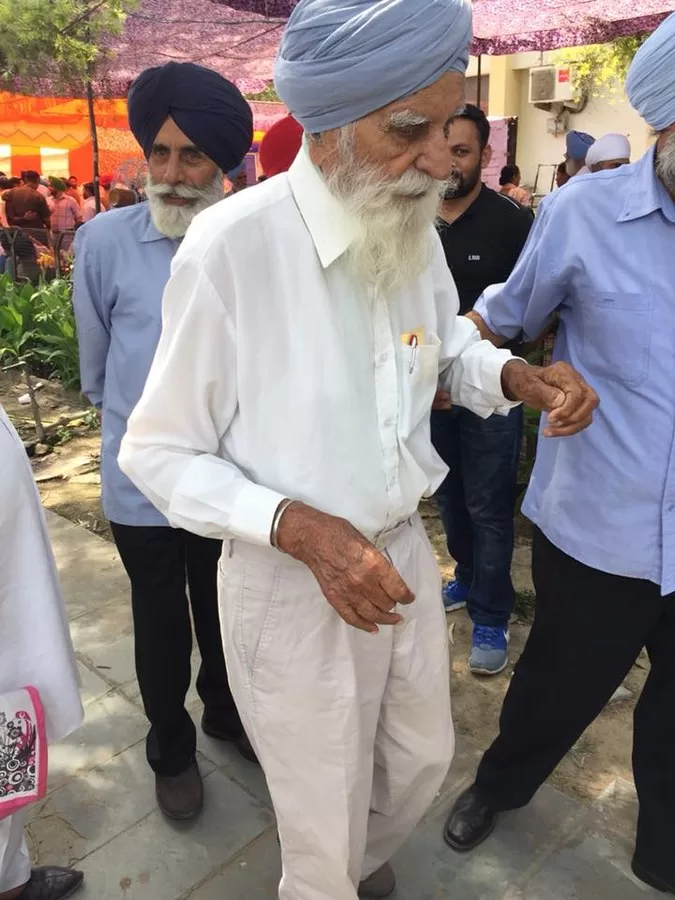
Image by Harvinder Chandigarh
Born in the village of Dhudike in the Indian state of Punjab, Kanwal’s literary career spanned several decades, making him one of the most influential figures in Punjabi literature. His writing reflected the social, cultural, and political landscape of Punjab, capturing the essence of rural life and the changing dynamics of society.
Kanwal’s works encompassed various genres, including novels, short stories, and essays. His writing often explored the complexities of human relationships and the struggles faced by the common people. He was a keen observer of the human condition and had a deep understanding of the Punjabi ethos.
Throughout his prolific career, Jaswant Singh Kanwal received numerous accolades and awards for his literary achievements, solidifying his place as a celebrated Punjabi writer.
His legacy endures through his literary masterpieces, which continue to resonate with readers, preserving the rich cultural heritage of Punjab and the Punjabi language. Kanwal’s writings remain an essential part of Punjabi literature, offering valuable insights into the region’s history and society.
10. Baba Farid (1173-1266)
Baba Farid, also known as Sheikh Farid, was a revered Sufi saint and poet whose verses continue to be cherished in Punjabi literature.
He was widely regarded as one of the most important literary figures in Punjabi literature. Born in the region that is now Pakistan, he played a significant role in shaping the cultural and spiritual heritage of Punjab.
Farid’s poetry, written primarily in Punjabi, carries profound Sufi wisdom and mystical insights. His verses, known as “shlokas,” emphasize love, devotion, and the unity of humanity with a deep spiritual resonance. He advocated for peace, compassion, and harmony among people, transcending religious and social boundaries.
Baba Farid’s writings have had a lasting influence on Punjabi culture, inspiring generations with his teachings on love, humility, and the pursuit of inner truth.
His poetry continues to be celebrated and recited across the Punjab region and beyond, serving as a source of inspiration for poets, scholars, and spiritual seekers. Baba Farid’s legacy endures, reminding us of the enduring power of literature to unite people and impart timeless wisdom.
The Bottom Line
Punjabi literature is a vibrant and diverse tradition that has produced a multitude of talented writers and poets over the years. The ten famous Punjabi writers mentioned in this article have made significant contributions to this literary heritage, each with their unique style and perspective. They have explored the human condition, delved into the complexities of love and loss, and provided profound insights into society, culture, and history.
Their works continue to inspire and resonate with readers, transcending borders and languages to reach a global audience. Punjabi literature owes a great debt to these writers, who have helped preserve and enrich this rich literary tradition for generations to come.
Education
Ludhiana: Guest Faculty Finally Receive 10-Month Salary Arrears
In Ludhiana, a big win for guest faculty members happened recently.
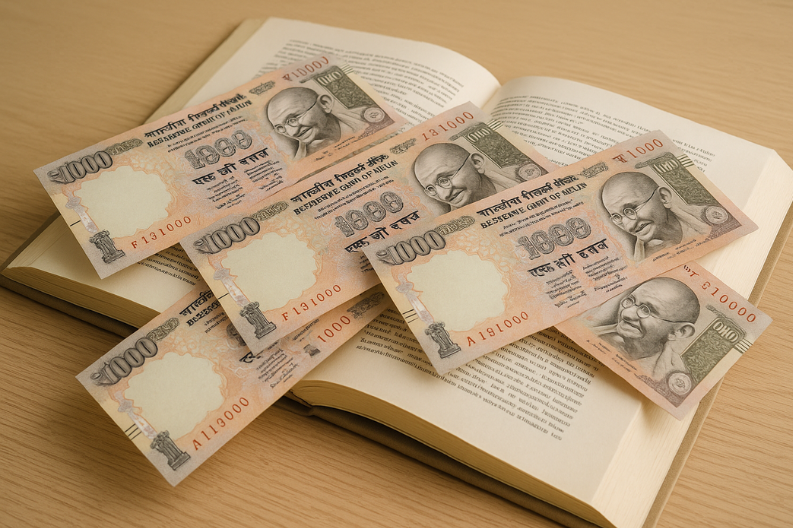
A major relief arrived in Ludhiana after the guest faculty finally receive 10-month salary arrears, bringing joy to hundreds of teachers who had waited almost a year for their pending payments. The Guest Faculty Assistant Professors United Front celebrated this moment and appreciated the government for responding with care and speed.
Leaders of the United Front: Ravinder Singh Mansa, Gursev Singh Patiala, Paramjit Singh, and Muhammad Tanveer, thanked Higher Education Minister Harjot Singh Bains for his quick action. They said his involvement played a key role in clearing the long-pending salaries, which had caused stress for many teachers.
Guest faculty members have supported Punjab’s education system for more than twenty years. They teach in government colleges across the state and continue to guide thousands of students every year. Because of their long contribution, many believe they deserve stronger recognition and fair job security.
In 2022, the Aam Aadmi Party government increased the honorarium for guest professors. This move showed that the state understands its needs and values its service. However, when the government hired permanent professors later, new administrative steps caused delays. As a result, salaries in 25 colleges got stuck, leaving many guest faculty members under financial pressure.
Fortunately, coordinated efforts between the principal secretary and the director of higher education helped end this problem. They removed procedural hurdles and ensured payments finally reached teachers. The United Front also praised the director of higher education for honest and steady leadership during this difficult period.
Teachers across Punjab shared how delays affected their daily lives. Many said they continued teaching with dedication despite financial hardship. Ravinder Singh urged the government to regularize guest faculty services so teachers who served for decades can gain stable positions. He explained that permanent jobs would reflect the true value of their contribution to higher education.
Guest faculty members have shaped the academic journey of countless students. Because of their constant support, many colleges have been able to run smoothly even during staff shortages. Giving them job security would not only help teachers but also improve student learning.
Better treatment of educators leads to better education for everyone. When teachers feel supported, they can focus fully on teaching, guiding, and inspiring young minds. Moreover, regular pay and stable employment help create stronger academic environments.
In conclusion, clearing the pending salary dues marks a positive step for Punjab’s education sector. It shows that the government is willing to listen and respond to teachers’ concerns. Many hope this progress continues, offering more recognition and long-term support, especially after the guest faculty finally receive 10-month salary arrears.
Daily News
What Is an AI Bubble? A Deep, Clear Explanation

Artificial Intelligence (AI) has transformed from a futuristic dream into a booming global industry. Trillion-dollar valuations, skyrocketing chip demand, and rapidly expanding data centers have convinced many that AI will change the world. And in many ways, it will. But beneath the excitement, the rapid pace of investment and financial engineering has raised an important question: Are we living through an AI Bubble?
Just like the dot-com era of 1999 or the US housing bubble of 2008, an “AI Bubble” refers to a dramatic rise in valuations, investments, and expectations-far beyond what real-world fundamentals justify. When these expectations eventually confront reality, the bubble risks bursting.
This article explains what an AI bubble is, how it forms, why it matters, and how investors and industries should view it.
1. Understanding the Core Idea of a Bubble
A “bubble” is an economic condition where asset prices rise sharply because of hype, momentum, and optimism-rather than actual performance and revenue.
In the context of AI:
- Companies are investing heavily in computing power and data centers.
- Investors are pouring money into AI startups at record valuations.
- Tech giants are spending tens of billions on chips, servers, and software.
- Everyone assumes that AI will soon generate massive profits.
A bubble forms when expectations grow much faster than actual, sustainable earnings.
In other words:
A bubble is created when we assume infinite growth based on finite evidence.
2. Why AI Is Attracting Trillions of Dollars
Before calling it a bubble, we must understand why this technology attracts so much money.
AI promises:
- Faster automation
- Better productivity
- New business models
- Breakthroughs in medicine, education, finance, robotics, and more
- Massive time and cost savings for enterprises
Global companies do not want to miss out on a technological shift that could determine the next generation of winners in the economy.
There’s nothing wrong with this. Innovation requires investment.
The issue begins when these investments turn speculative, detached from realistic outcomes.
3. What Creates an AI Bubble?
a. Exponential Investment vs. Slow Monetization
AI models (LLMs, diffusion models, robotics brains) need:
- Immense GPU power
- Large data centers
- Cheap electricity
- High-bandwidth networking
- Engineering teams
- Safety teams
- Product teams
Yet, despite billions spent, AI revenue is still small. Except for a few giants like Google and Microsoft, most companies haven’t found a profitable business model.
If expenses rise faster than revenue, valuations can become artificially inflated.
b. Circular Financing
In a healthy economy, money flows like this:
Investor → Company → Revenue → Profit
But in bubbles, the flow becomes circular:
Investor → Company A → Company B → Company A
Example pattern:
Company A invests in Company B → Company B uses the funds to buy Company A’s products → Company A’s revenue goes up → valuation goes up → investors put more money.
It creates an illusion of demand-when in reality, the cash keeps cycling inside the same loop.
c. Hidden Debt and Financial Engineering
Some companies don’t want to show massive AI-related debt on their balance sheets. So they create:
- SPVs (Special Purpose Vehicles)
- Leasing structures
- Off-balance-sheet borrowing
- Vendor financing arrangements
This makes their main company appear financially healthy, even when huge risks are quietly accumulating elsewhere.
This is similar to the 2008 housing bubble, where mortgage risks were hidden inside complex derivatives.
d. GPU and Data Center Mania
An AI model isn’t just software-it lives inside expensive data centers packed with GPUs. The cost of building these facilities has exploded.
But here is the issue:
- GPUs depreciate quickly
- New generations release faster than before
- The hardware becomes obsolete
- Data center rental rates fluctuate
- Electricity and cooling costs rise
- AI demand is not guaranteed
If the business model does not justify massive capex, the investment becomes risky.
4. Fake Demand and Overreaction to Geopolitics
AI chips also became expensive because geopolitics created artificial scarcity. Restrictions on selling high-end chips to countries like China created a “shortage premium.” Companies started hoarding chips, not because they needed them immediately, but out of fear of missing out.
This artificial demand can collapse quickly once supply stabilizes.
5. AI Hype Across Non-Tech Industries
In the dot-com era, every company rushed to add “.com” to their name.
Today, something similar is happening:
- AI toothbrush
- AI washing machine
- AI refrigerator
- AI hair dryer
- AI fan
- AI cooker
- AI helmet
- AI vacuum cleaner
Most of these “AI-enabled” products do not provide any meaningful intelligence. But companies do this to attract investor money and media attention.
When hype becomes a strategy, a bubble is already forming.
6. Historical Parallels: How Bubbles Usually Work
Dot-Com Bubble (2000):
- Companies grew without revenue
- IPOs doubled on listing day
- “Internet will change everything”
- But most firms had no profits
- Bubble burst when investors demanded real cashflows
Housing Bubble (2008):
- Excessive borrowing
- Hidden risks
- Overconfidence that prices will always rise
- Collapse triggered a global recession
AI Bubble Today:
- Massive capex
- Hidden debt
- Unrealistic expectations
- Companies using AI tag for hype
- Concern that revenue may not catch up soon
7. Is AI Itself a Bubble? Absolutely Not.
Artificial intelligence is real. It is transformative, and it’s here to stay.
But the financial ecosystem around AI may be inflated.
The internet survived the 2000 crash.
Housing still exists after 2008.
But the companies built on unrealistic promises disappeared.
Similarly, AI will remain essential for the next 50+ years-but many AI businesses may not survive the financial correction.
8. When Can an AI Bubble Burst?
Predicting exact timing is impossible.
But bubbles usually burst when:
- interest rates rise
- profitability lags
- capital becomes expensive
- debt accumulates
- growth expectations fail
- competitive pressure increases
- investors look for safer opportunities
If companies cannot turn today’s multi-billion-dollar investments into sustainable revenues, correction becomes inevitable.
9. What Happens If the AI Bubble Bursts?
Short-term impact:
- Stock market correction
- Valuations of AI startups collapse
- GPU and data center prices drop
- Over-leveraged firms face bankruptcy
- Investors lose money on speculative bets
- Hiring slows across tech sectors
Long-term positive impact:
- Weak, overhyped companies disappear
- Strong products survive
- Innovation becomes more disciplined
- Infrastructure becomes cheaper
- AI becomes more accessible
- Industry stabilizes
- Real business models mature
Bubbles clean the ecosystem and leave behind only what truly works.
10. Will AI Still Grow After a Bubble? Yes-Even Faster.
A bubble does not destroy technology. It only destroys bad investments.
After the dot-com crash, the internet entered its golden period.
>After the crypto crashes, blockchain matured and became more regulated.
>After solar energy crashes, renewable companies finally became profitable.
AI will follow the same pattern:
Temporary hype → Bubble → Correction → Sustainable long-term growth
Final Thoughts
An AI Bubble forms when optimism outpaces logic, financial engineering hides risk, and everyone assumes growth will continue forever. But AI itself is not the bubble. The bubble is the money, debt, valuation, and expectation built around the technology.
AI will change the world. But the journey may include a financial reset-one that separates hype from real innovation.
True revolutions don’t collapse after a bubble.
They only get stronger.
Education
Ladakh is Becoming a Knowledge Hub of the Himalayas, Says LG Kavinder Gupta
On November 2, 2023, Lieutenant Governor Kavinder Gupta spoke at a special event in Mohali.
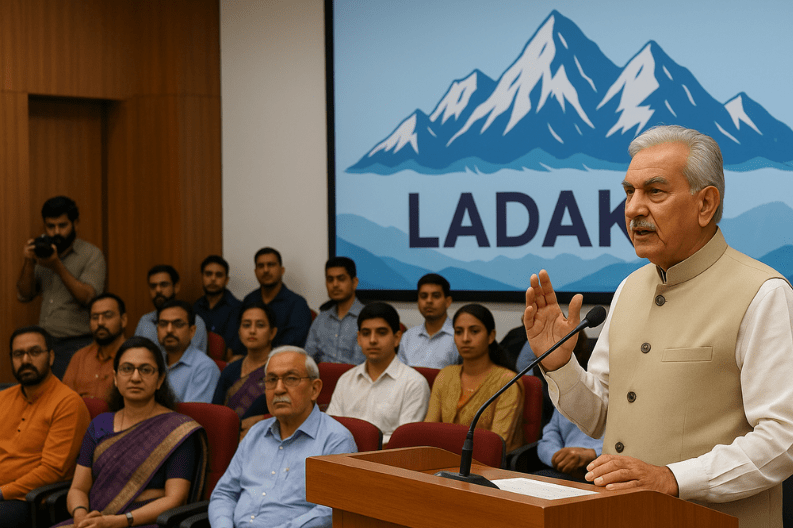
On November 2, 2023, Lieutenant Governor Kavinder Gupta addressed a large gathering in Mohali during the closing ceremony of the 5th Edition of the Shiksha Mahakumbh Abhiyan 2025 at the National Institute of Pharmaceutical Education and Research (NIPER). The event brought together teachers, researchers, and students from across India to discuss how education can shape the nation’s future. The theme, “From Classroom to Society – Building a Healthier World through Education,” perfectly matched the idea that Ladakh is becoming a knowledge hub of the Himalayas.
During his speech, Gupta spoke about India’s proud tradition of learning and self-reliance. He said, “Our rulers may have been enslaved, but the soul of Bharat never accepted subjugation.” His words reminded the audience that knowledge has always been India’s strength, even during difficult times.
He praised Prime Minister Narendra Modi’s leadership in advancing education through the National Education Policy (NEP 2020). Gupta emphasized that India’s education system is now moving beyond textbooks. “Under the Prime Minister’s leadership, India’s education system has evolved to include technology, skills, and values,” he said. According to him, this approach creates responsible citizens who can serve the country’s development.
Gupta also acknowledged Vidya Bharati’s role in promoting discipline, cultural awareness, and national pride among students. “Education must not only enlighten the mind but also awaken the moral conscience of the nation,” he said. He encouraged teachers to help students connect classroom lessons to real-life community goals.
He discussed how education has strengthened social unity in Jammu & Kashmir and Ladakh. “There was a time when misguided voices tried to divide people, but now education has united them,” Gupta said. He added that learning has replaced fear with hope and inspired youth to aim higher.
Speaking about Ladakh’s achievements, Gupta highlighted that the region has made remarkable progress in literacy. “Inspired by Prime Minister Modi’s vision of Viksit Bharat 2047, Ladakh has made education the center of its growth model,” he said. The Union Territory is now a Fully Functionally Literate Region under the ULLAS (New India Literacy Programme) with a literacy rate of 97%, far above the national average.
The establishment of the University of Ladakh has been a game-changer. It has become a center for innovation and cross-cultural learning. Additionally, more than 150 Smart Classrooms and 171 ICT Labs have been set up to improve digital education in schools. The construction of 36 PM SHRI Schools will soon add modern facilities to further raise educational standards.
Before the closing ceremony, Prof. (Dr.) Thakur S.K.R, Director of DHE, presented a detailed report summarizing discussions and future plans for the Shiksha Mahakumbh. Many teachers and students were honored for their excellence in education. Dilaram Chauhan, General Secretary of Vidya Bharati (North Zone), delivered a keynote address emphasizing the importance of collaboration between schools and society.
Bal Kishan, Joint Organising Secretary of Vidya Bharati, North Zone, described the event as “a living example of cooperation between schools, universities, and communities.” This partnership shows how unity in education can lead to national progress.
The activities and ideas shared during the Shiksha Mahakumbh show a firm commitment to transforming education in the Himalayan region. They highlight how a focus on learning can build a peaceful, inclusive, and strong society.
With steady development and visionary leadership, Ladakh is becoming a knowledge hub of the Himalayas. The region’s success reflects India’s growing emphasis on education, innovation, and values that will guide the next generation toward a brighter future.
-

 Entertainment2 years ago
Entertainment2 years agoTop 15 Punjabi Models – Male and Female List
-

 City Guide2 years ago
City Guide2 years ago3B2 Mohali Market Shops: Discover 44 Hidden Gems
-

 Entertainment2 years ago
Entertainment2 years agoTop 11 Punjabi Comedians of All Time
-

 Jobs4 years ago
Jobs4 years agoTop 20 IT Companies in Mohali
-

 Food4 years ago
Food4 years ago11 Best Restaurants in Mohali You Must Visit
-

 Property2 years ago
Property2 years agoWho Lives In Homeland Mohali: Punjabi Celebrities, Business People…
-

 Food3 years ago
Food3 years agoTop 15 Cafes in Mohali you must visit
-

 City Guide3 years ago
City Guide3 years agoTop 12 Rooftop Restaurants in Mohali to Enjoy Cityscapes
